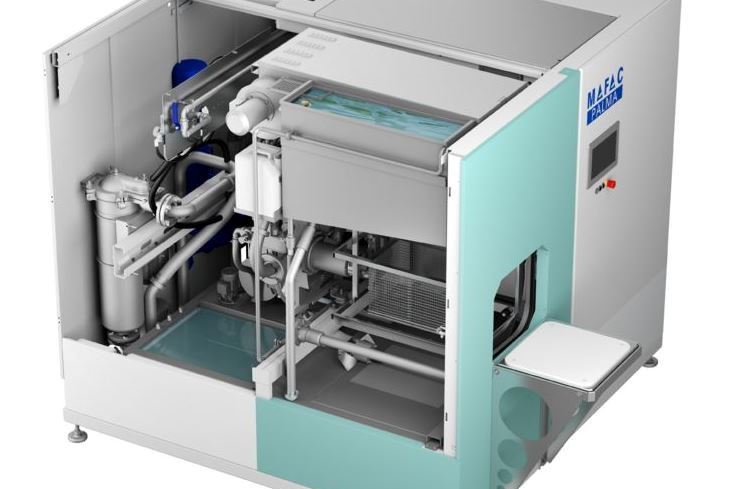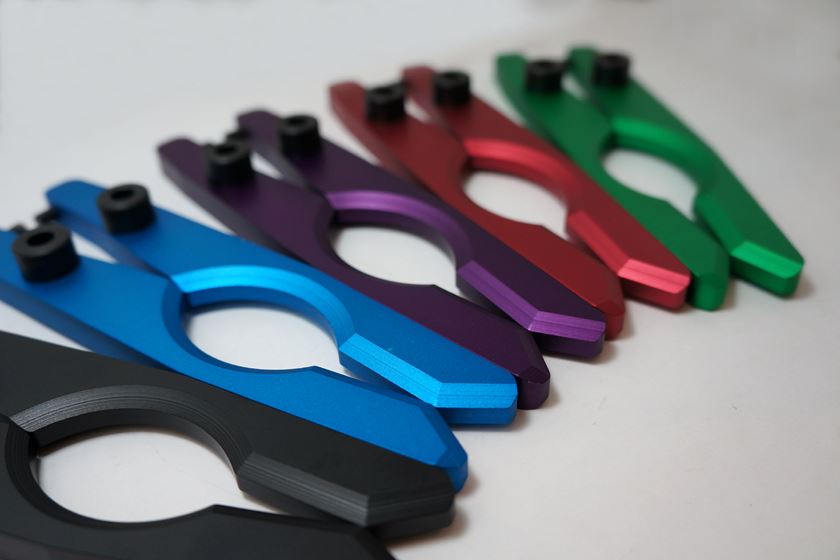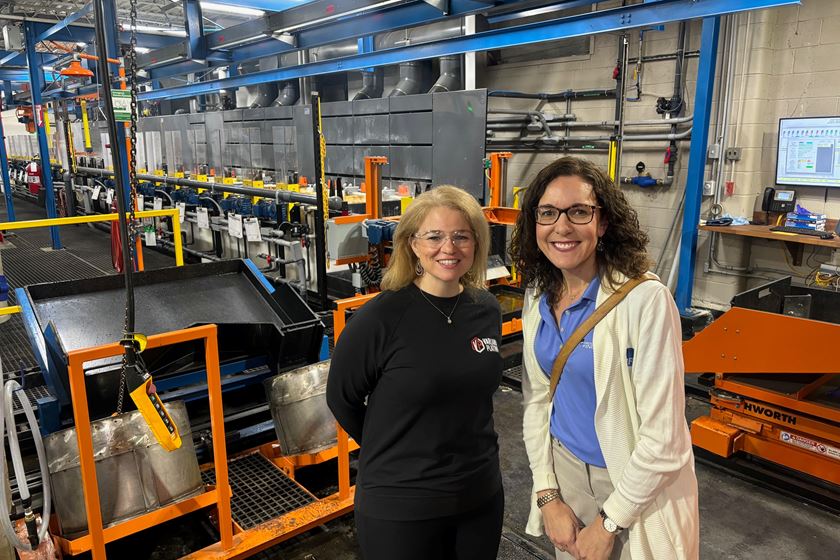One Company’s Junk is Another Company’s Plastic Rake
Manufacturing Research Center at Western Michigan University received nearly $1 million from the U.S. Department of Energy to develop a “green manufacturing initiative” to study and reduce the amount of powder coating waste going to landfills.
#energy
What do an elegant Herman Miller desk and a block of concrete have in common?
Plenty, if you’ve taken on a green initiative and you’re trying to reduce the amount of refuse you send to a landfill.
We’ll get to Mr. Miller and his cool desk in a minute, but we’ll first tell you about an effort by a group of powder coaters in Michigan to reduce the amount of waste they are sending to the landfill in the form of overspray.
“Spray to waste” is an expression that has been used in the coatings industry for years, and not much thought has been given to where the waste goes after it is sprayed in a powder coating booth. Of course, there is equipment that will eliminate any spray going to waste, but there are also many among us who don’t flinch when used powder goes in the trash, especially those using small batches or frequent color changes.
And that’s where the Manufacturing Research Center at Western Michigan University comes in. It received nearly $1 million from the U.S. Department of Energy in 2009 to develop a “green manufacturing initiative” (GMI) to study and reduce the amount of waste going to landfills.
“Greening manufacturing operations have never been more necessary,” Dr. John Patten, director of the initiative and the Manufacturing Resource Center, says in his report about its activities. “Emerging market demands and governmental regulations are making the move to sustainable manufacturing a necessity for success.”
Patten leads the WMU program along with Dr. David Meade. With their team, they are working to help manufacturers in Michigan get greener and save money.
Patten and Meade say the push behind their GMI is to collaborate with scholars at other universities and about 40 companies to enhance economic and workforce development, and to provide potential for technology transfer. Essentially, what they find they will share, which is always a great idea.
The GMI has worked on such projects as oven seals, harmonics and transformers. In 2011, however, the group turned its attention to reducing the amount of powder coating some shops send to landfills. It formed the Waste Powdercoat User Group and collected data from various powder coating applicators on how they applied the coating and what was sent to landfills.
Focused on six operations, the researchers found that nearly 1.5 million lbs per year of waste was being generated. Using an average cost in the region of $3.50/lb, they reported a waste stream with a yearly value of about $5 million. The user group then formed a working group coordinated through the Manufacturing Research Center that includes General Motors, Light Corp. and furniture makers Haworth and Herman Miller. Bill Stough from Sustainable Research Group manages the meetings.
Patten and Meade say that, after one year of work, the working group has been able to divert all of the members’ waste powder paint from the landfill.
How did the group do it? Let’s get back to the
Herman Miller example. Herman Miller began using concrete counterweights in some of its furniture products back in the ’90s. The company had a discussion with its concrete vendor, VanderWall Brothers, and realized that wasted powder coating could be mixed into the concrete to help form the counterweights.
In the past year, about 80,000 lbs of powder coating have been diverted from the landfill and mixed into the concrete blocks, which are hidden, so color is not a problem. The Herman Miller and VanderWall group also discovered that the additives in the powder coating increased the strength of the concrete, made it more water repellent and provided no leeching from the salts naturally in the concrete.
Herman Miller shared its findings with others in the working group—yes, even competitor Haworth—and now others are looking more closely into how to use their excess powder. Other coaters are looking at selling or melting resin-based waste powder to plastics manufacturers to form parts such as rakes.
“The overall success of this initiative is greatly enhanced by the willingness of participants—sometimes competitors— to work together on this problem,” Patten says. “It is widely felt that this is a non-competitive issue and that, if we all can get to a better level of performance with regard to diverting this material from the landfill, we all win.”
RELATED CONTENT
-
Expanding on E-Coat
Electrocoat products and processes continue to evolve, with development focused on lower energy use, very low VOC content and methods to reduce cost per applied square foot. The following is a primer on how a combination of new materials and good process control can be used to achieve the highest possible efficiency.
-
Firearms and Flatware Feed Silvex’s Growing Electroplating Operation
It’s obvious that Silvex specializes in silver, but its processes also reach into the defense, aerospace, power generation and medical industries.
-
Greener Hard Chromium Plating
By improving tribological properties as well as corrosion resistance, hard chromium plating can lower energy consumption of moving parts and machinery, reduce the need to replace parts frequently, leading to reduced waste and improved efficiency.















